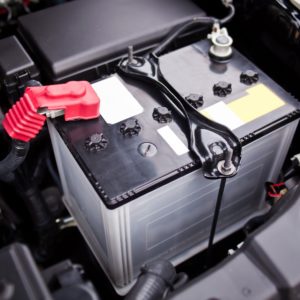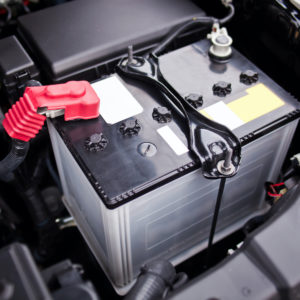What is a battery isolator and how does it work? Do you need a battery isolator? If you haven’t heard about battery isolators, this guide will answer all your questions about them.
What Is a Battery Isolator?
A battery isolator is an electronic device that divides electrical current from a power source and ensures that current flows in only one direction. Typically, you’ll find isolators in recreational vehicles where more than one battery is used. An isolator allows a single alternator to charge more than one battery.
A battery isolator is often used to manage accessory loads on vehicles. Various vehicle accessories and tools, such as lifts and winches may require battery isolators to control the current flowing into them better and to keep the vehicle’s batteries in top shape.

What Kinds of Vehicles Need a Battery Isolator?
Battery isolators are typically installed in recreational vehicles with auxiliary batteries. They’re also used in trucks, airplanes, boats, and various machines to prevent a drained battery from pulling the current from other batteries and disabling the entire electrical system.
How Does a Battery Isolator Work?
Vehicles have a main battery that provides the power to start the engine and power important vehicle systems when the engine is off. The main battery typically doesn’t see deep discharge cycles because it’s routinely charged by the alternator or generator. The alternator is responsible for charging the battery and providing power to the rest of the vehicle while the engine is running.
Meanwhile, some vehicles can have one or multiple batteries aside from the main one called auxiliary batteries. These auxiliary batteries power other devices. Battery isolators make sure that extra batteries in a dual or multiple battery system are charged properly. They also prevent extra devices in the vehicle from completely draining the main battery.
When the alternator is charging the main battery, the isolator will allow current to also flow to the auxiliary battery. But when the engine is turned off, the isolator separates the main battery from the auxiliary battery so that the main battery doesn’t get drawn down.
What’s the Difference Between a Diode Isolator and a Solenoid Isolator?
A diode battery isolator uses two diodes or one-way switches to direct the flow of current from the battery to the isolator. It’s generally easy to maintain and repair and lasts longer than a solenoid isolator.
A solenoid isolator makes use of relays or switches to control the flow of current. While one of the relays receives the current from the main battery, the other one monitors the power levels in the other batteries.
Diode Battery Isolator Pros and Cons
Diode battery isolators come with a lot of advantages and disadvantages. Be sure to keep them in mind before deciding which battery isolator works for you.
Diode Isolator Pros
- Easy to Use. One of the biggest advantages of using diode battery isolators is that they’re easy to use. They don’t have any moving parts, which means they’re built to withstand the test of time.
- Offers Protection. Diode battery isolators prevent auxiliary batteries from draining the main battery. This prolongs battery life by ensuring that the starting battery is always charged.
- Minimal Maintenance. Because diode battery isolators don’t come with any moving parts, you won’t need to perform maintenance on them often. They have simple, straightforward designs which make them ideal for the everyman.

Diode Isolator Cons
- Reduced Charging Efficiency. Diode battery isolators cause slight voltage drops. This negatively impacts charging efficiency, reducing battery charge levels.
- Generates Heat. Another major downside that comes with using diode battery isolators is that they generate lots of heat. They’ll require proper ventilation to prevent them from overheating.
Solenoid Battery Isolator Pros and Cons
Before deciding which battery isolator type fits your lifestyle, consider the pros and cons of both. Here are the advantages and disadvantages of solenoid battery isolators.
Solenoid Pros
- Optimum Charging Efficiency – Solenoid battery isolators don’t cause voltage drops. This means the vehicle can use all of the alternator’s power output to charge the batteries.
- Cost-Effective – Another crucial benefit of solenoid battery isolators is that they’re generally cheaper than most battery isolator types. This means they’re more cost-effective, saving you money in the long run.
- Heavy-duty applications – Solenoid battery isolators can handle high current loads. This makes them excellent for heavy-duty activities.
Solenoid Cons
- Complex Design – One of the biggest downsides of using a solenoid battery isolator is that they have many moving parts. Their complex designs make it difficult to repair or replace specific components. Moving parts also wear out quickly.
- Difficult to Install – Installing a solenoid battery isolator can be challenging because of its complex design. They also require control circuits to activate.
Requires Manual Operation – Though this isn’t true for all solenoid battery isolators, many require manual switching. This can make them difficult and inconvenient to use.
What’s the Difference Between Battery Separators and Isolators?
As previously mentioned, battery isolators help eliminate the issue of battery drain in dual or multiple battery systems by making sure that the current from one battery to another flows in one direction. Battery separators are often called smart battery isolators. They are more complex than isolators because they perform multiple functions.
Battery separators monitor the charge needs of two batteries. If the charge needs exceed what the alternator can provide, the separator disconnects the auxiliary battery and sends all the electrical charge to the main battery. In situations where the main battery doesn’t have enough voltage, the separator can close to allow current to flow from the auxiliary battery to the main battery.
Once the main battery is fully charged, the separator will then allow the auxiliary battery to be charged. When the auxiliary battery is fully charged, it will be disconnected from the charger. This process continues as long as the engine is running.

Where Do You Install a Battery Isolator?
To install a battery isolator, you need to find a safe place near the batteries. It’s better if the isolator is mounted in a secure but accessible location on the metal frame of the vehicle so you can perform repairs and maintenance on it later on.
How to Choose the Right Battery Isolator
Here are a few things you should keep in mind if you’re shopping for battery isolators:
- Voltage and amperage – Battery isolators are rated to carry specific amounts of voltage and amperage just like other electronic devices. They aren’t supposed to exceed those values because the circuit can overload and overheat, potentially causing a fire.
- Number of batteries – You also have to determine how many batteries each battery isolator will support. It’s recommended that you have one isolator per circuit.
- Ease of installation – Unless you’re having a professional do the installation for you, it’s important to consider choosing an insulator that can easily be installed.
How Much Does a Battery Isolator Cost?
The cost of battery isolators ranges from around $75 to $250 for the parts alone. This price range depends on several factors, such as brand, quantity, type, and inclusions. If you’re not going to install the isolator yourself, you also have to consider the labor cost, which depends on your area.
Any information provided on this Website is for informational purposes only and is not intended to replace consultation with a professional mechanic. The accuracy and timeliness of the information may change from the time of publication.


























